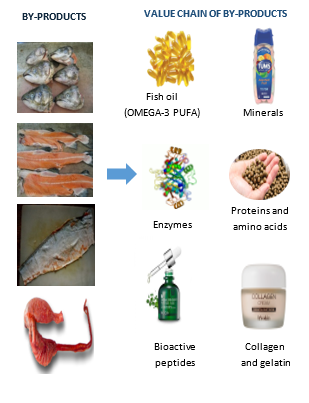BEYOND PROCESSING: FULL UTILIZATION OF ATLANTIC SALMON BYPRODUCTS
The Province of Newfoundland and Labrador is home to an aquaculture industry that is focused on the production of salmon and mussels. The province produced 10,620 tonnes of salmonids worth $57.6 million in 2020 . A large portion of the salmon (80%) harvested in Canada is further processed. Atlantic salmon processing removes the fillet portion of the salmon, but leaves the rest (head, skin, frame and trimmings: 45-50% of the body weight) as waste or for low value uses. Aquaculture firms dedicate a great deal of funds and resources to grow the entire salmon and when this non-fillet portion is not used effectively, this part of the investment is lost. Moreover, additional costs can be incurred in efforts to handle this potential resource and find a suitable means of disposal (transportation costs, tipping fees for dumping). In province, the issue of lost financial potential of unutilized salmon resources is worsened by the logistical and environmental issues posed by limited disposal options (composting, mink feed, landfilling). These salmon resources are a rich source of essential high value nutraceuticals and pharmaceuticals including collagen, gelatin, protein, amino acids, bioactive peptides, omega-3, oil and enzymes. The non-fillet portion of salmon is typically comprised of 15-19% proteins, 22-25% fat and 53-60% moisture in addition to minerals.
investigated the efficient and economic pretreatment methods including grinding, tumbling and antioxidant addition
for preservation of salmon by-products ( head, frame and gut) followed by extracting salmon oil from different parts using enzymatic hydrolysis and total lipid content and the omega-3 fatty acid profile in the oil was analyzed.
Besides fish oil, studies about collagen in marine byproducts have also been carried out. Proximate composition and hydroxyproline estimation of byproducts from Atlantic Cod, Atlantic salmon, and lumpfish have been performed. The content of moisture, ash, lipid, protein, and collagen were measured, and the results indicated that collagen is most abundant in salmon skin.
Currently we are investigating the protein and amino acid compositions and
extraction and isolation and purification of bioactive peptides from salmon byproducts.
